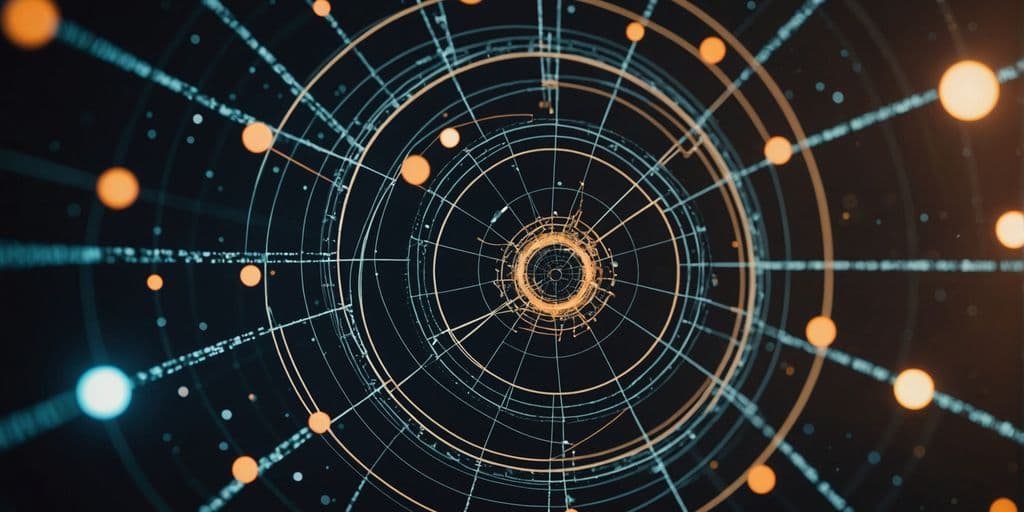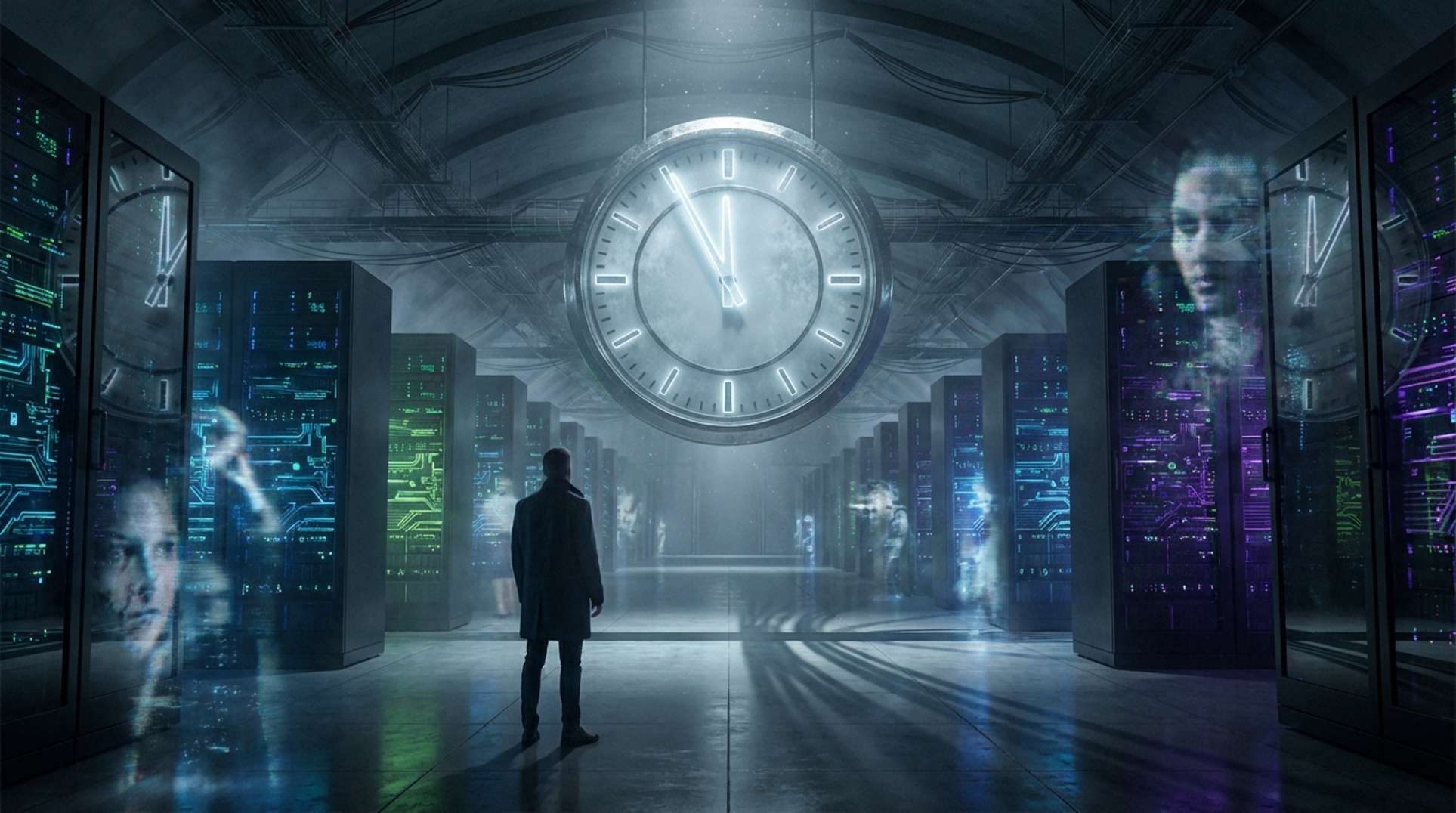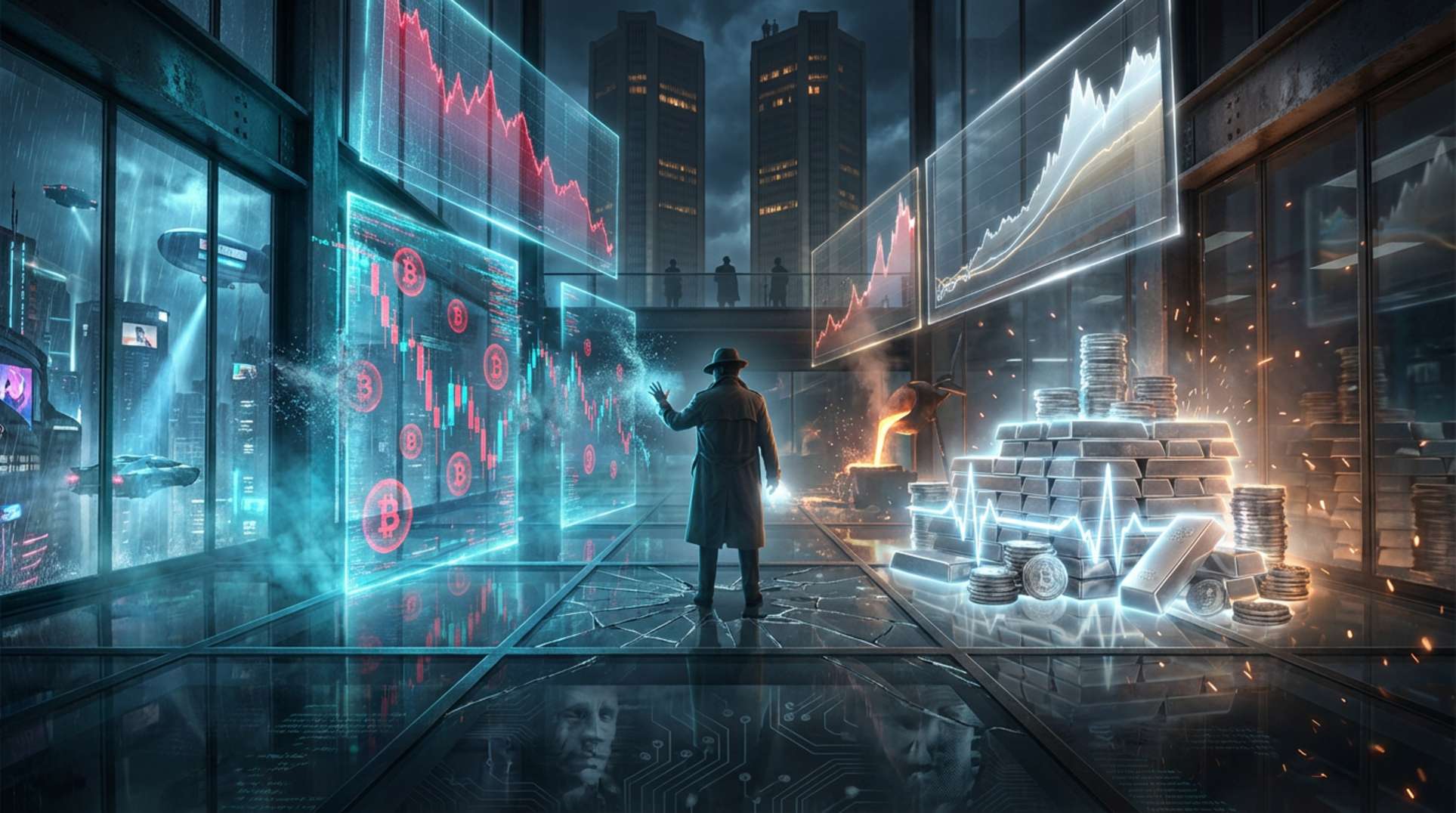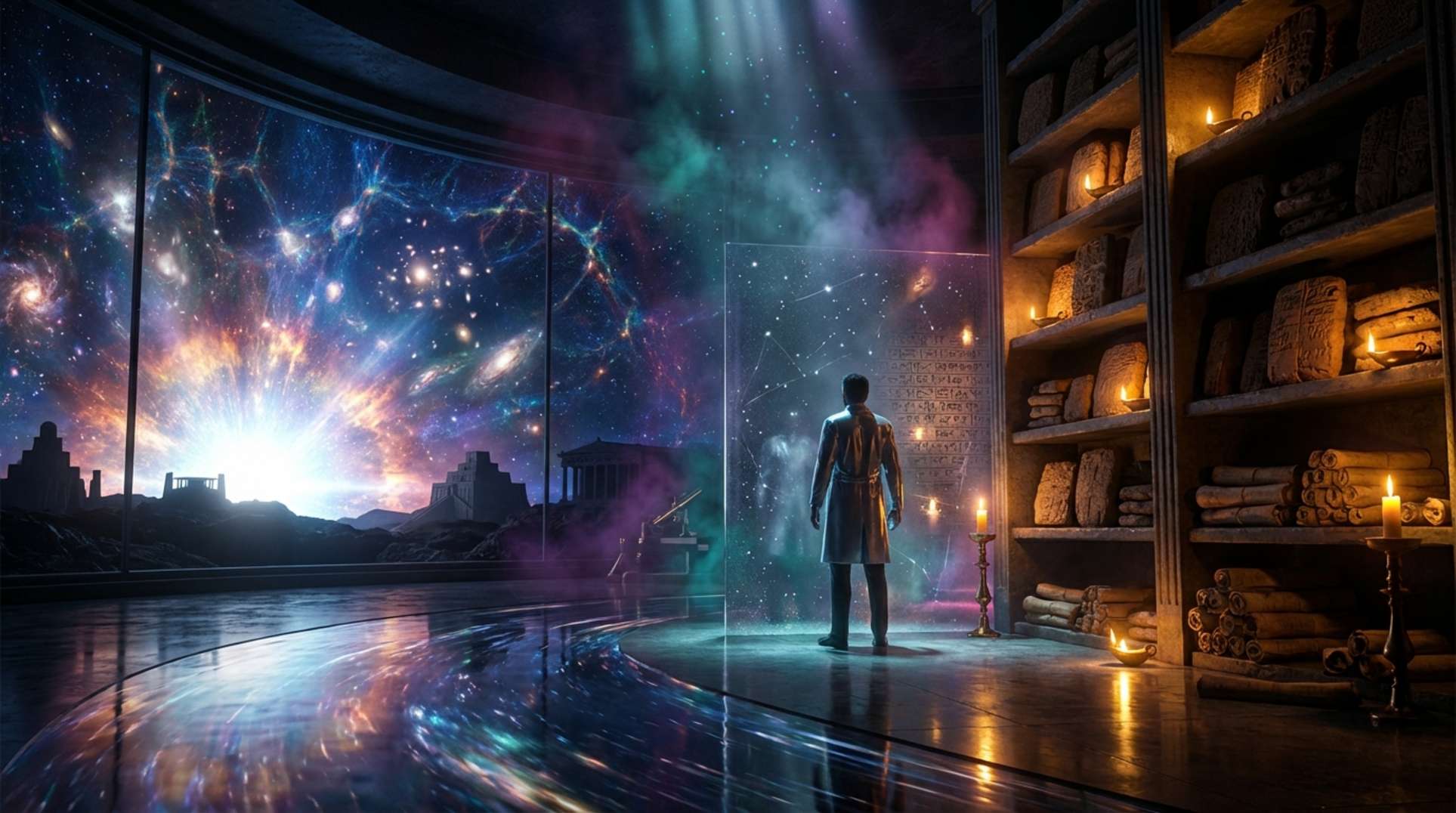Fringe science explores ideas that push the boundaries of accepted scientific knowledge. These theories often challenge our understanding of reality and provoke both curiosity and skepticism. From quantum consciousness to ancient astronaut theories, fringe science invites us to consider possibilities beyond conventional wisdom.
Key Takeaways
- Fringe science theories often challenge mainstream scientific views and provoke both interest and skepticism.
- Quantum consciousness suggests a connection between human consciousness and quantum mechanics.
- The multiverse theory proposes the existence of parallel realities and alternate dimensions.
- Time travel theories explore the possibilities and paradoxes of moving through time.
- The simulation hypothesis questions whether our reality is actually a computer simulation.
Quantum Consciousness: Bridging Science and Spirituality
Quantum consciousness is a fascinating idea that connects the strange world of quantum mechanics with human consciousness. This theory suggests that our minds might be linked to quantum phenomena like entanglement and superposition. This idea challenges the traditional view of consciousness as just brain activity.
The Multiverse Theory: Parallel Realities and Alternate Dimensions
The multiverse is the hypothetical set of all universes. Together, these universes are presumed to comprise everything that exists: the entirety of space, time, matter, and energy. This theory suggests that our universe is just one of many, each with its own unique laws of physics and constants.
Time Travel: Theoretical Possibilities and Paradoxes
Time travel has fascinated scientists and dreamers alike for generations. The idea of moving through time, either to the past or the future, presents both thrilling possibilities and perplexing challenges. It raises questions about the very nature of reality and causality.
Cold Fusion: The Quest for Unlimited Energy
Cold fusion, a theoretical form of nuclear reaction occurring at or near room temperature, has long been a tantalizing prospect for scientists and energy enthusiasts alike. The allure of a clean, virtually limitless energy source has driven numerous experiments and debates over the years. Despite the excitement, cold fusion remains a highly controversial topic within the scientific community.
The Simulation Hypothesis: Are We Living in a Computer Simulation?
Philosophical Foundations
The Simulation Hypothesis suggests that our reality might be an artificial simulation, similar to a highly advanced computer program. This idea challenges our understanding of existence, proposing that everything we experience could be the result of complex code created by an advanced civilization. Philosophers like Nick Bostrom have argued that if it’s possible to create such simulations, it’s likely we are living in one.
Scientific Arguments and Counterarguments
Proponents of the Simulation Hypothesis point to the rapid advancements in technology, particularly in virtual reality and artificial intelligence, as evidence that creating a simulated universe might be feasible. They argue that if humanity continues to develop computational power, we might eventually create simulations indistinguishable from reality. However, critics argue that the hypothesis is unfalsifiable and lacks empirical evidence, making it more of a philosophical speculation than a scientific theory.
Implications for Understanding Reality
If the Simulation Hypothesis is true, it has profound implications for our understanding of reality. It suggests that the laws of physics and the universe itself might be designed and controlled by an external entity. This perspective could change how we approach scientific inquiry, ethics, and our place in the cosmos. It raises questions about free will, the nature of consciousness, and the ultimate purpose of existence.
The Simulation Hypothesis invites us to reconsider the nature of reality, challenging the boundaries between science and philosophy. It opens up a realm of possibilities that could redefine our understanding of existence.
Cryptozoology: The Study of Hidden Animals
Cryptozoology is the study of animals that are rumored to exist but have not been proven by science. These creatures, known as cryptids, capture the imagination and curiosity of many. From the legendary Bigfoot to the elusive Loch Ness Monster, cryptozoologists seek to uncover the truth behind these mysterious beings.
Ancient Astronaut Theory: Did Extraterrestrials Visit Earth?
The Ancient Astronaut Theory suggests that extraterrestrial beings visited Earth in ancient times and influenced human civilization. This theory challenges traditional views of history and archaeology, proposing that many ancient structures and technologies were either directly created or inspired by these visitors from other worlds. Proponents argue that certain archaeological findings and ancient texts provide evidence of these encounters, although mainstream science remains skeptical.
Key Proponents and Theories
Prominent figures like Erich von Däniken and Zecharia Sitchin have popularized the Ancient Astronaut Theory. They claim that ancient texts, such as the Bible and the Sumerian tablets, contain references to advanced beings from other planets. These proponents suggest that many myths and legends are actually historical accounts of extraterrestrial visits.
Archaeological Evidence and Interpretations
Supporters of the theory point to various ancient structures, such as the pyramids of Egypt and the Nazca Lines in Peru, as evidence of advanced technology that could not have been developed by early humans alone. They argue that these structures exhibit precision and complexity that would have been impossible without external assistance. However, critics argue that these interpretations are speculative and lack concrete proof.
Criticism from Mainstream Science
Mainstream scientists and archaeologists largely dismiss the Ancient Astronaut Theory, labeling it as pseudoscience. They argue that human ingenuity and resourcefulness are sufficient to explain the achievements of ancient civilizations. The Fermi Paradox is often cited, questioning why, if extraterrestrials visited Earth in the past, there is no clear evidence of their presence today. Critics also point out that the theory underestimates the capabilities of ancient peoples and often relies on misinterpretations of historical and archaeological records.
The debate over the Ancient Astronaut Theory highlights the tension between conventional scientific understanding and alternative explanations of our past. While the theory captivates the imagination, it remains a controversial and largely unsupported hypothesis within the scientific community.
Free Energy Devices: Perpetual Motion Machines and Overunity
The quest for perpetual motion machines has fascinated inventors for centuries. These devices are designed to operate indefinitely without an external energy source, defying the first and second laws of thermodynamics. Despite numerous attempts, no one has succeeded in creating a working perpetual motion machine. The fundamental laws of physics suggest that such a machine is impossible.
In recent years, there have been claims of new technologies that achieve overunity, meaning they produce more energy than they consume. These claims often involve advanced materials or novel energy conversion methods. However, the scientific community remains skeptical, as these innovations often lack rigorous testing and peer review.
The scientific community is highly skeptical of perpetual motion machines and overunity devices. There is no way to make a perpetual motion machine, as it would violate the fundamental principles of thermodynamics. Many purported free energy devices have been debunked as either misunderstandings or outright frauds. Scientists emphasize the importance of adhering to established physical laws and demand robust evidence before accepting any extraordinary claims.
The pursuit of free energy devices, while intriguing, often highlights the importance of understanding and respecting the fundamental laws of nature. It serves as a reminder that innovation must be grounded in scientific reality.
Psychic Phenomena: Telepathy, Telekinesis, and Beyond
Psychic phenomena, often studied under the umbrella of parapsychology, include abilities like telepathy, telekinesis, and extrasensory perception (ESP). These phenomena challenge our conventional understanding of the mind and reality.
Alternative Medicine: Healing Beyond Conventional Science
Homeopathy is a form of alternative medicine that uses highly diluted substances with the aim of triggering the body’s natural healing processes. Despite its popularity, it remains a highly controversial practice. Critics argue that homeopathy lacks scientific evidence and is no more effective than a placebo. Proponents, however, claim that it offers a holistic approach to health, addressing both physical and emotional well-being.
Traditional Chinese Medicine (TCM) includes practices like acupuncture, herbal medicine, and tai chi. TCM is based on the concept of balancing the body’s vital energy, or qi. While some studies suggest that TCM can be effective for certain conditions, it often faces skepticism from the mainstream medical community. Nonetheless, TCM has been used for thousands of years and continues to be a popular alternative to conventional treatments.
Energy healing practices, such as Reiki, involve the transfer of energy from the practitioner to the patient to promote healing. These methods are often viewed with skepticism by the scientific community due to a lack of empirical evidence. However, many individuals report positive experiences and improvements in their overall well-being. Energy healing emphasizes the connection between mind, body, and spirit, offering a unique perspective on health and wellness.
Beyond conventional medicine, alternative practices like homeopathy, TCM, and energy healing offer diverse approaches to health that challenge traditional scientific paradigms.
Astrology: The Influence of Celestial Bodies on Human Affairs
Astrology is a method of predicting mundane events based upon the assumption that the celestial bodies—particularly the planets and the stars considered in their arbitrary combinations or configurations (called constellations)—in some way either determine or indicate changes in the sublunar world. Astrology has been practiced since ancient times and has played a significant role in various cultures. It is based on the belief that the positions and movements of celestial bodies can influence human affairs and natural phenomena.
Conclusion
Fringe science theories push the boundaries of our understanding and challenge the status quo. While many of these ideas may seem outlandish or lack mainstream acceptance, they play a crucial role in the scientific process by encouraging curiosity and critical thinking. By exploring these unconventional theories, we open ourselves to new possibilities and perspectives that can lead to groundbreaking discoveries. As we continue to investigate the mysteries of our universe, it’s important to maintain an open mind and a healthy skepticism, balancing innovation with rigorous scientific scrutiny. In the end, fringe science reminds us that the quest for knowledge is an ever-evolving journey, filled with unexpected twists and turns that can ultimately expand our comprehension of reality.
Frequently Asked Questions
What is quantum consciousness?
Quantum consciousness is the idea that quantum mechanics can explain human consciousness. It suggests our thoughts and awareness might be deeply connected to quantum processes.
What is the multiverse theory?
The multiverse theory proposes that there are multiple, possibly infinite, universes besides our own. These parallel universes might have different laws of physics and alternate realities.
Is time travel possible?
Time travel remains a theoretical concept. According to Einstein’s theory of relativity, time travel to the past might be possible through wormholes or cosmic strings, but it has not been proven.
What is cold fusion?
Cold fusion is the idea of achieving nuclear fusion at room temperature. It promises unlimited energy but remains controversial and unproven in mainstream science.
What is the simulation hypothesis?
The simulation hypothesis suggests that our reality might be an artificial simulation, like a computer program. It raises questions about the nature of existence and reality.
What is cryptozoology?
Cryptozoology is the study of animals that are rumored to exist but have not been proven by science, like Bigfoot or the Loch Ness Monster.
What is the ancient astronaut theory?
The ancient astronaut theory suggests that extraterrestrials visited Earth in ancient times and influenced human civilization. It is a fringe theory not widely accepted by mainstream science.
Are free energy devices real?
Free energy devices, like perpetual motion machines, claim to produce energy without an external source. However, they violate the laws of physics and have not been proven to work.




